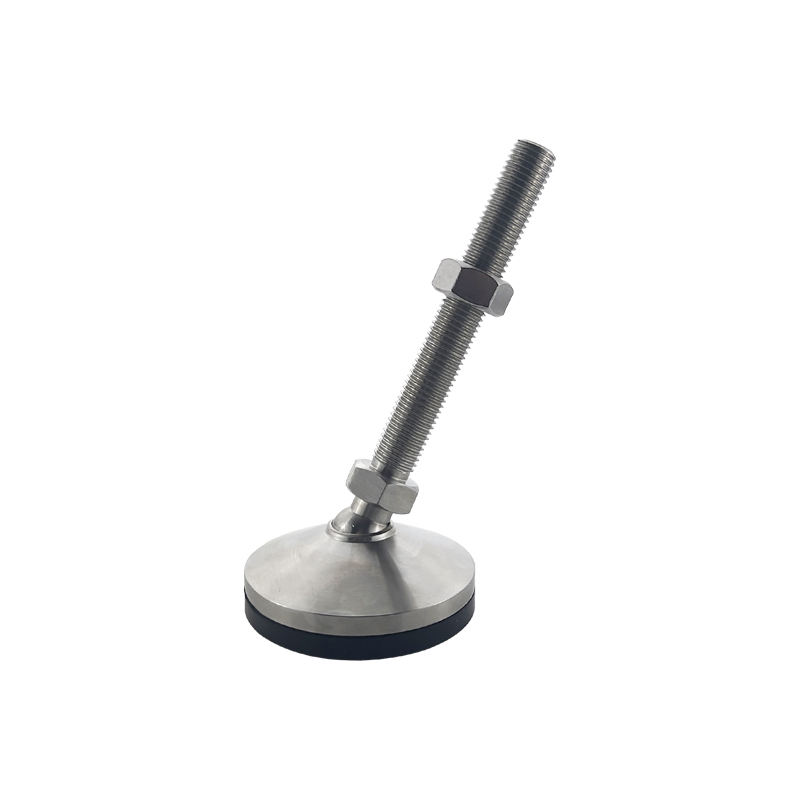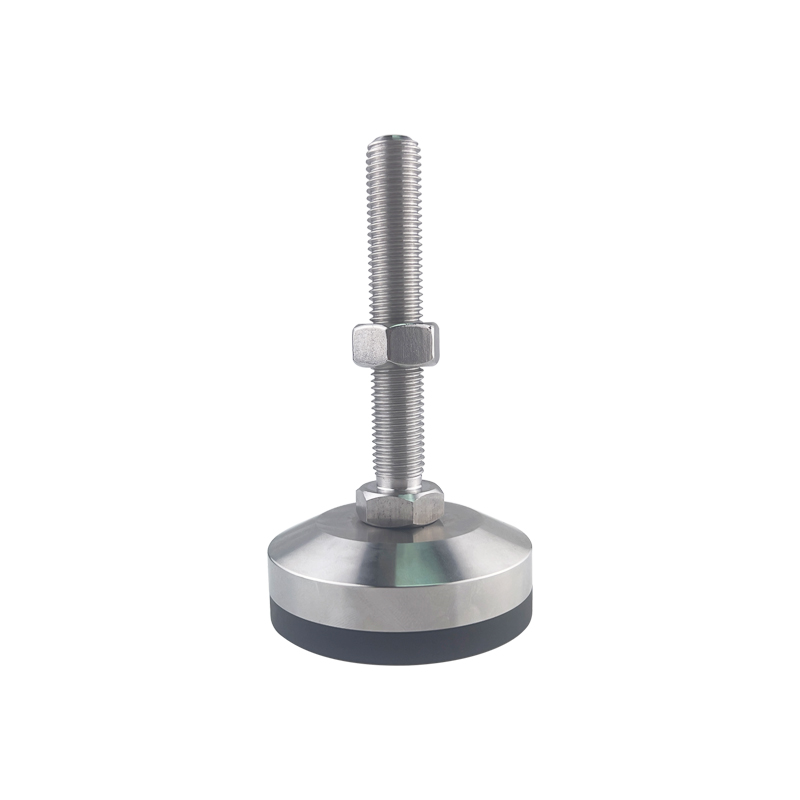When it comes to stabilizing equipment, machinery, or furniture, the type of feet you choose can significantly impact performance, safety, and longevity. The two most common types are adjustable leveling feet and fixed feet, each with distinct features, advantages, and ideal applications.
In this guide, we’ll compare adjustable and fixed feet in detail to help you choose the best option for your application—whether it's machine leveling mounts, furniture supports, or industrial equipment feet.
What Are Adjustable Leveling Feet?
Adjustable leveling feet, also known as leveling mounts or leveling legs, feature a threaded stem that allows users to raise or lower each foot independently. This adjustability makes them ideal for uneven floors or equipment that needs precise alignment.
Key Features of Adjustable Leveling Feet:
● Threaded height adjustment
● Anti-slip rubber or metal base options
● Vibration-dampening capabilities
● Available in stainless steel, carbon steel, nylon, and plastic
● Load ratings from light-duty to heavy-duty
Stainless Steel Adjustable Leveling Feet with Rubber
What Are Fixed Leveling Feet?
Fixed feet, on the other hand, do not offer height adjustment. They provide a stable, stationary base for equipment that does not require leveling or is already on a perfectly flat surface.
Key Features of Fixed Feet:
● Rigid structure, no adjustability
● Typically simpler and lower cost
● Common in lightweight furniture or bolted industrial equipment
● Limited functionality for uneven or sloped floors
Comparison Table: Adjustable Leveling Feet vs Fixed Feet
| Feature | Adjustable Leveling Feet | Fixed Feet |
| Height Adjustability | Yes (threaded adjustment) | No |
| Ideal for Uneven Floors | Perfect solution | Not suitable |
| Vibration Control | Available with anti-vibration pads | Limited or none |
| Installation Flexibility | Easy to install and adjust | Static setup only |
| Load Capacity Options | Wide range from light to heavy duty | Typically low to moderate |
| Cost | Slightly higher, but offers more flexibility | Lower initial cost |
| Best Use Cases | Machinery, workbenches, kitchen equipment | Cabinets, tables on flat floors |
When to Use Adjustable Leveling Feet?
Adjustable leveling feet are ideal for situations where surface level varies or where stability and vibration reduction are critical. Here are common applications:
● Industrial Equipment
Use adjustable machine leveling feet on CNC machines, lathes, compressors, and assembly line stations. They help maintain accuracy and reduce operational vibration.
● Commercial Kitchen Equipment
From stainless steel prep tables to dishwashers and refrigerators, adjustable stainless steel feet allow for quick leveling on tiled or uneven surfaces, improving hygiene and safety.
● Laboratory and Medical Furniture
Adjustable furniture leveling legs are crucial for lab benches, diagnostic equipment, and hospital beds, ensuring stability and height customization.
● Office and Home Furniture
For desks, shelves, and entertainment units, adjustable furniture feet provide wobble-free stability on wood, tile, or carpeted flooring.
When to Use Fixed Feet?
Fixed feet are appropriate when the installation environment is already level, and no frequent adjustments are needed. Consider fixed feet if:
● Your equipment will be permanently bolted to the floor
● You are working on flat, level concrete
● The application is lightweight, like household furniture or small shelving units
Examples:
● Fixed plastic feet for lightweight tables
● Steel fixed mounts for wall-mounted enclosures
● Rubber fixed feet for electronics on stable workstations
Pros of Adjustable Leveling Feet and Fixed Feet
Adjustable Leveling Feet
● Suitable for uneven surfaces
● Reduces vibration and noise
● Offers flexibility in repositioning and leveling
● Widely available in anti-slip, anti-vibration, and hygienic designs
Fixed Feet
● Cost-effective for stable environments
● Simple to install and maintain
Frequently Asked Questions about Equipment Leveling Feet
1. What are adjustable leveling feet used for?
Adjustable leveling feet are used to stabilize furniture, machinery, and equipment on uneven floors. They allow height adjustment to ensure balance, reduce vibration, and prevent wobbling. Common applications include machine tools, lab equipment, kitchen workstations, and heavy-duty shelving units.
2. Are fixed feet suitable for industrial equipment?
Fixed feet may be suitable for industrial equipment only when the floor is completely level and the equipment is permanently installed. For most industrial applications, adjustable machine leveling mounts are preferred due to their flexibility and ability to handle uneven surfaces and vibration.
3. Can I use leveling feet on heavy machines?
Yes, heavy-duty adjustable leveling feet are specifically designed to support large machinery like CNC machines, air compressors, and industrial presses. Always check the load rating and choose a foot with an appropriate thread size, base diameter, and material strength.
4. What materials are best for leveling feet in wet environments?
For wet or corrosive environments, such as commercial kitchens, labs, or outdoor applications, stainless steel leveling feet with anti-slip rubber pads are ideal. They offer corrosion resistance, hygiene compliance, and long-lasting durability.
5. How do I install adjustable leveling feet?
Installation is simple. Most adjustable feet come with threaded stems that screw directly into pre-drilled holes or threaded inserts on the bottom of the equipment or furniture. Height can be adjusted manually or using a wrench for fine-tuning.
6. Are there anti-vibration leveling feet?
Yes, many adjustable leveling mounts come with anti-vibration features, such as rubber or elastomer pads. These are excellent for applications involving moving parts, motors, or sensitive instruments, helping to minimize movement and noise.
7. What’s the difference between leveling feet and casters?
Leveling feet are designed to stabilize and hold equipment in place, often with anti-slip or vibration-damping features. Casters, on the other hand, allow movement. Some hybrid options, like caster leveling feet, offer both mobility and stabilizing functions.
8. Do adjustable feet come in different sizes?
Yes, adjustable feet are available in a wide range of sizes, including different thread diameters (e.g., M8, M10, M12, etc.), height adjustment ranges, and base widths. Be sure to choose a size that suits the weight and footprint of your equipment.
9. Are leveling feet necessary for furniture?
Absolutely. Furniture leveling legs improve stability on uneven floors, reduce wear, and prevent tipping or wobbling. They're especially useful for office desks, cabinets, shelving units, and home entertainment systems.
10. Where can I buy industrial adjustable leveling feet?
You can find industrial-grade leveling feet from hardware suppliers, machinery accessory stores, or online platforms. For large-scale or custom applications, it’s best to work directly with a leveling feet manufacturer or OEM supplier. Manywell is one of the leveling feet manufacturers. We offer OEM/ODM service with dual guarantees of quality and service.
Conclusion: Which Should You Choose?
If you're working with uneven flooring, heavy machinery, or require frequent adjustments, adjustable leveling feet are the clear winner. Their versatility, stability, and vibration control features make them indispensable in industrial, medical, commercial, and residential environments. On the other hand, fixed feet can be a practical, budget-friendly option for stable environments with minimal demands.
For most professional applications—especially in manufacturing, food service, and healthcare—adjustable leveling mounts provide far superior performance and adaptability.
Manywell equipment leveling feet are designed to ensure steadfast support and impeccable balance across various industrial and commercial settings. Tailor-made solutions are available to meet specific needs in specialized environments. Contact us at [email protected] for more.

